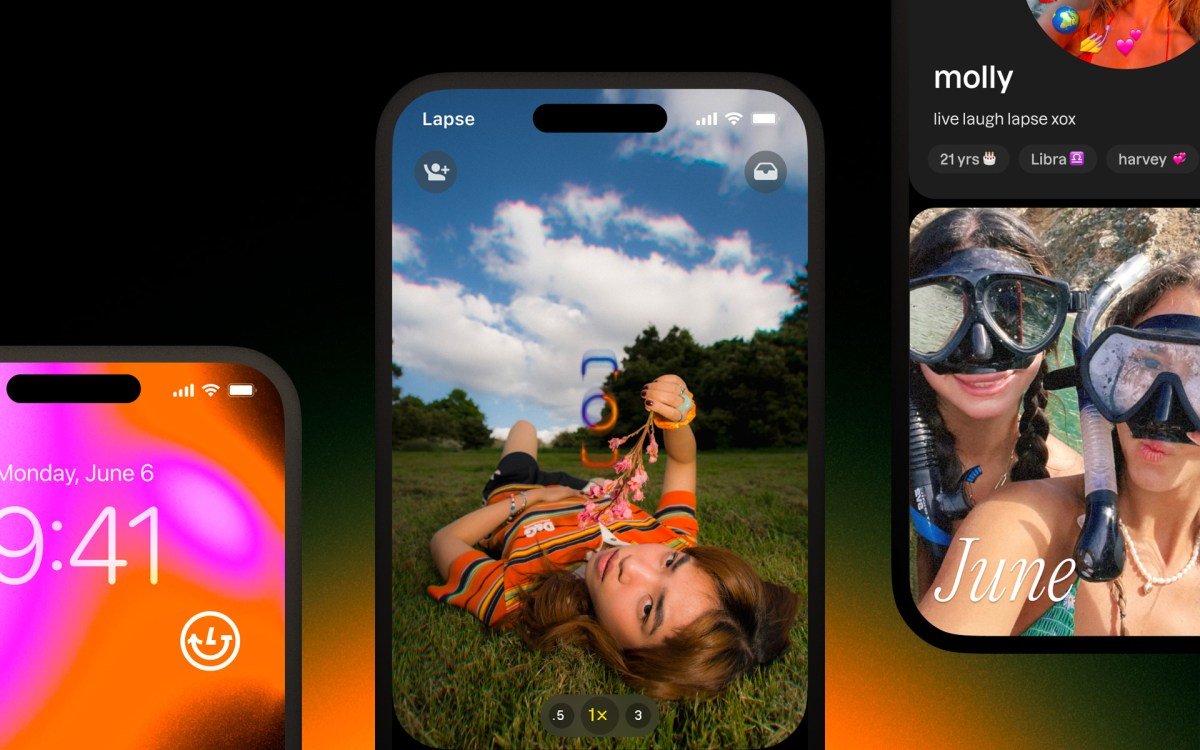In the year 2024, it would cost a pretty penny to find an analogue camera, purchase film (and possibly specialized batteries), and snap photos that then require payment to be developed. However, this experience carries a certain charm and simplicity that many may still long for. Fortunately, a startup by the name of Lapse is offering smartphone users an alternative. With this app, you can take photos that must wait to be developed before you can view them, and you have no chance of editing or retaking them. These pictures can then be shared with a select group of friends, if you so choose.
Lapse has been gaining significant traction in the market, boasting millions of users and capturing 100 million photos each month. It also maintains a coveted, top-10 ranking in the U.S. app store for photographic apps. Now, the company has announced a new round of funding totaling $30 million, with plans to continue expanding its ambitions and reach.
The investment was co-led by Greylock, a well-known consumer app investor who has supported the likes of Facebook, Instagram, TikTok (when it was still Musical.ly), and LinkedIn in their early stages. DST Global Partners, another iconic firm, also participated in the funding round. Existing investors GV, Octopus Ventures, and Speedinvest also contributed. This latest influx of funds brings Lapse’s total raised to over $42 million, with a valuation estimated at around $150 million.
Lapse’s goals include enhancing the “unedited” photo experience, adding new features for users, and eventually expanding into video capabilities.
According to CEO and co-founder Dan Silvertown, the company may even venture into monetization in the future. However, they have yet to explore this possibility and are actively avoiding the traditional approach of integrating advertisements into the app. “The prevailing sentiment is to steer clear of that,” Silvertown stated in an interview.
Lapse’s ethos may have a nostalgic feel, but the mechanics of the app are anything but old-school.
As previously recounted, Silvertown co-founded the app with his brother Ben, after Ben found himself longing for the freedom of a point-and-shoot camera while traveling in Asia. He wanted to capture and share moments without being constantly tied to an app, obsessing over likes and keeping up with others’ posts. This led the brothers to explore ways to recreate the analogue experience through a smartphone.
Although the app does not offer editing capabilities or the option to constantly retake photos, there are notable behind-the-scenes processes at work.
“The photo goes through about 12 different steps during processing,” Silvertown explained. Some of these involve computer vision technology and others employ proprietary and third-party tools. The overall purpose is to optimize the appearance of subjects and the composition of the photo. (Note: for those who export photos to other apps, there is a set of edit features available for personal use, but these are not designed for sharing natively on Lapse.)
On the other hand, there are some aspects of the app that have been met with criticism.
Lapse has faced scrutiny (as noted in our previous article) for its use of growth-hacking and forced invites to increase app installs. While this technique did result in a surge of users, with the app reaching the top of U.S. and U.K. iOS app stores (the only platforms where it is available), it raises questions about sustainability and user-friendliness in the long run if the app itself lacks unique and useful features to retain users.
However, Silvertown maintains that the startup had to start somewhere. As the premise of the app is to share photos with a small group of friends without a discovery feed, it’s challenging to gain traction if new users have no contacts using Lapse. These days, the app no longer utilizes forced invitations to grow, as it has reached a critical mass of users and is experiencing natural virality.
However, my own experience shows that for completely new users (particularly those sensitive to sharing personal data on unfamiliar social apps), it can still be challenging to navigate through the app’s prompts and features without sharing at least a few names and numbers.
The issue brings us to an essential point: we are now at a significant crossroads in the world of consumer apps. Consumers are increasingly aware of the personal data they give up by using most apps. While dominant platforms have billions of users, they have largely strayed from their original focus on sharing with small groups of friends. Furthermore, the most popular apps boast myriad features that move away from authenticity. Consequently, it opens up a niche for a few players willing to offer a simpler alternative. While others may have lost steam, Lapse remains confident in the future of its concept.
This conviction is shared by its investors as well.
“What’s fascinating is that most large-scale platforms, like Instagram or Facebook, started out as places to keep up with friends before evolving into the other functions we know them for today, such as news sites, entertainment hubs, or following influencers,” noted Jacob Andreou, a general partner at Greylock, in an interview.
“What’s interesting is that this left a gap where there is no longer a space to check out your friends’ profiles and see what they’re up to. It’s also an excellent place to start because that’s where these major platforms began. Taking photos, one at a time, and viewing them later after they’re developed, can lower the barrier to sharing, creating an unprecedented space to stay up to date with your friends.”
To conclude, Silvertown agrees that Lapse has learned valuable lessons about growth strategies. However, he maintains that the app was necessary to get off the ground. As it shifts towards a more “journaling” approach, users now have the option to create private or shared albums, extending the concept of sharing with a select few.
In summary, Lapse remains confident and poised for success as it continues to offer a unique, nostalgia-inducing take on social media and photo sharing.








